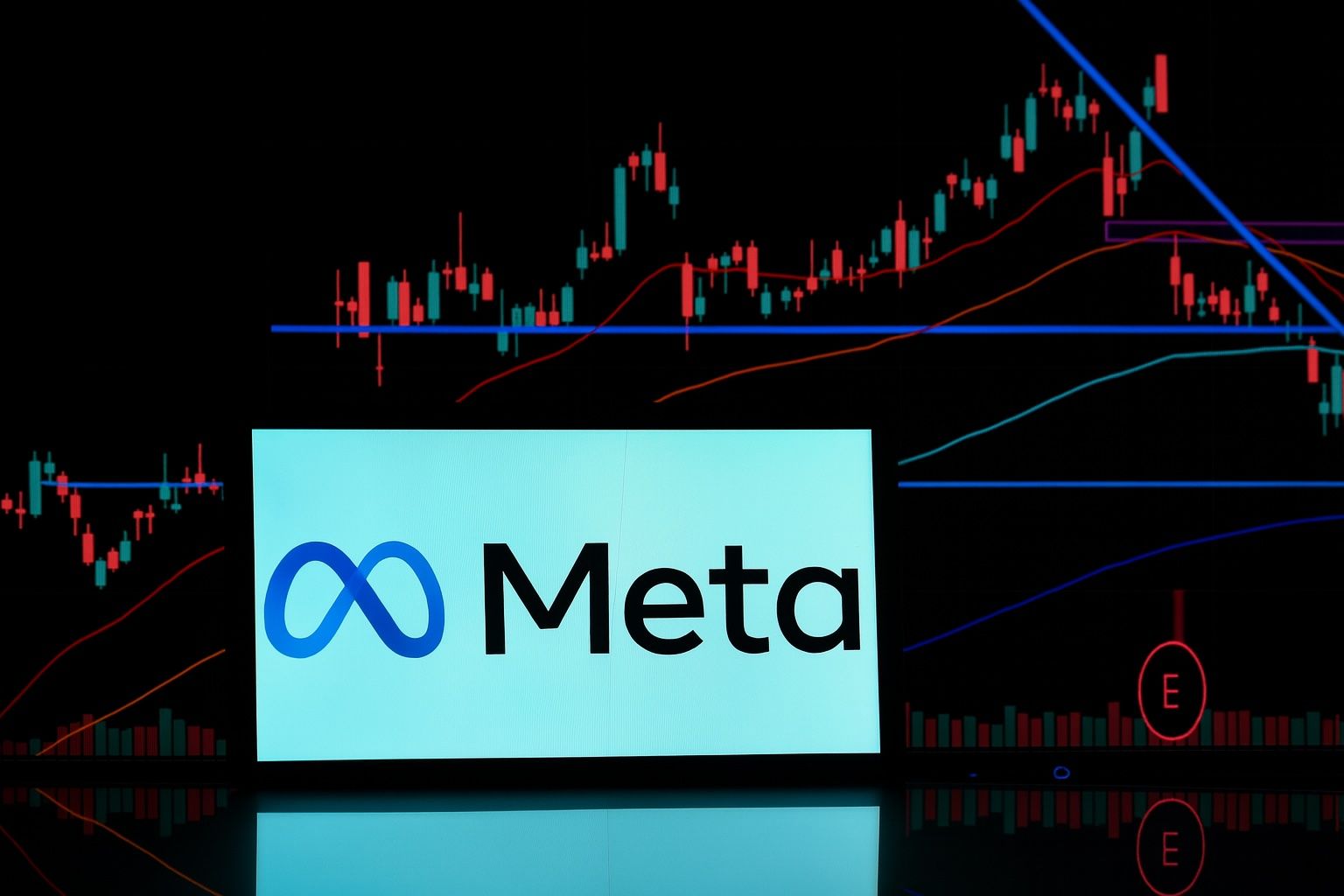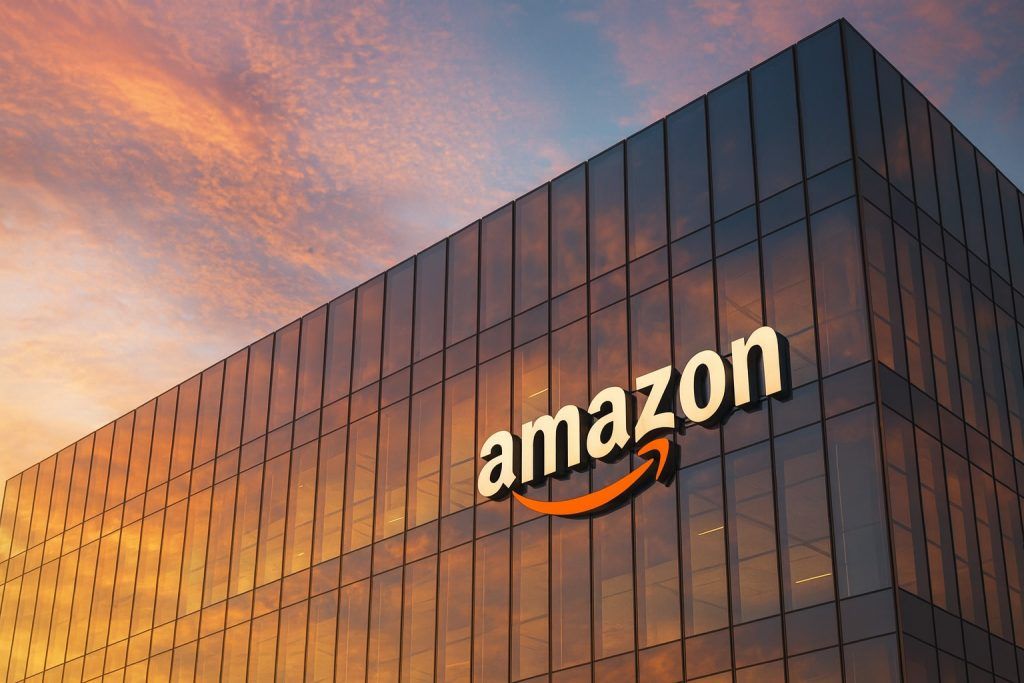- Strong Recent Performance: Meta Platforms’ stock closed at $716.92 on Friday, Oct. 17, up 0.68% for the day [1]. Shares are near record levels (52-week high ~$796) after a ~25% year-to-date rally [2], fueled by robust earnings and AI optimism. The stock has gained about 22% in the past year and almost 48% in the last six months [3].
- AI Infrastructure Investments: Meta is reportedly finalizing a $30 billion private financing deal for a massive new “Hyperion” AI data center in Louisiana – the largest private capital raise on record [4]. The deal, structured with partners like Blue Owl Capital and Pimco, lets Meta retain 20% ownership while keeping ~$27B of debt off its balance sheet [5] [6]. Meta is also building a separate $1.5 billion AI data center in Texas, underscoring its aggressive push to expand AI computing capacity [7].
- Aggressive AI Talent Push: Meta has been on an AI hiring spree. The company lured machine-learning expert Andrew Tulloch (co-founder of an AI startup) with a compensation package reportedly worth up to $1.5 billion over six years [8]. CEO Mark Zuckerberg has been actively poaching top AI researchers – even offering some candidates $100 million bonuses to join [9] – as Meta seeks to bolster its AI research division. This comes despite heavy spending; Meta’s Reality Labs (AR/VR unit) lost $3.7 billion in Q2 [10], but the company continues pouring billions into AI chips, talent, and data centers to sustain its growth [11] [12].
- Product Innovation & Smart Glasses: Meta’s foray into wearable tech is showing promise. AI-powered Ray-Ban smart glasses, developed in partnership with EssilorLuxottica, have been a surprise hit – contributing over 4 percentage points to sales growth for the Ray-Ban maker last quarter [13] [14]. EssilorLuxottica’s stock jumped 14% to an all-time high on the news [15]. Analysts at Barclays predict smart glasses “could become the most disruptive innovation since mobile phones,” projecting 60 million units sold globally by 2035 [16]. Meta already dominates about 60% of the AR/VR device market in 2025 [17], far ahead of Apple’s nascent efforts. (Apple has reportedly shifted focus toward its own AR glasses after its pricey Vision Pro headset underwhelmed, highlighting Meta’s early lead in extended reality [18].)
- Analyst Outlook & Upcoming Earnings: Wall Street remains broadly bullish on Meta. Dozens of analysts rate META a “Buy,” with an average 12-month price target around $825–850 and some high estimates topping $1,000 [19] [20]. Meta’s valuation – ~26× earnings with a ~$1.8 trillion market cap – is seen as reasonable given its growth [21]. The company reports Q3 2025 earnings on Oct. 29 (after market). Meta guided Q3 revenue of $47.5–50.5 billion [22], which would be ~20% higher year-on-year, continuing the strong 22% growth seen last quarter [23]. Investors will watch whether ad revenue and margins remain robust, and whether Meta’s heavy spending on AI and the metaverse is balancing long-term vision with near-term profits.
Market Performance & Context
Meta Platforms’ stock enters the week trading just below its record highs after a stellar run this year. Shares have climbed from under $600 in January to the mid-$700s, delivering roughly a 25% gain year-to-date by the end of Q3 [24]. The stock hit an all-time high near $789 in mid-August [25], and despite some volatility, it closed last week at $716.92 [26]. Over the past 12 months, Meta’s market value has swelled to about $1.8 trillion [27], reflecting investor confidence in its growth trajectory. Notably, Meta’s shares have outperformed many peers – up ~22% year-on-year and nearly 48% in the last six months [28] – amid broader enthusiasm for big tech and artificial intelligence.
This week, the broader market faces key tests that could influence Meta’s stock. Several tech titans (including Tesla and Netflix) are set to report earnings, and a delayed U.S. inflation report is due, events which could inject volatility into a market hovering near record highs [29]. Last week saw some risk-off sentiment after signs of strain in the banking sector, but overall the Nasdaq remains close to peak levels. Meta, as a heavyweight in the index, could be sensitive to any tech-wide swings in sentiment. However, its strong fundamentals – booming profits and resilient ad revenue – have so far helped it weather macro jitters better than many. As trading opens on Monday, investors will be digesting Meta’s latest headlines and the general market tone to gauge whether the stock’s momentum can continue.
AI Infrastructure: Massive Data Center Deals
One of the biggest developments around Meta recently is its eye-popping investment in AI infrastructure. According to reports on Friday, Meta is nearing a deal to raise $30 billion in private capital to fund a new data center project, codenamed Hyperion, in Richland Parish, Louisiana [30]. If finalized, this would mark the largest private financing ever for a data center, underlining the scale of Meta’s ambitions in artificial intelligence. The Hyperion facility is designed to be gargantuan – covering about 4 million square feet with up to 5 gigawatts of power capacity (enough to power ~4 million homes) [31] – and is expected to be completed by 2029 [32].
The financing structure is noteworthy. Meta is partnering with Blue Owl Capital and others to fund Hyperion via a special-purpose vehicle, allowing Meta to avoid loading $30B of debt directly on its balance sheet [33]. Meta will retain an approximately 20% equity stake in the project [34] and act as the developer, operator, and main tenant of the data center. Morgan Stanley helped structure the deal, which reportedly involves ~$27.5B in debt and about $2.5B in equity investment [35] [36], with PIMCO serving as the anchor lender [37]. The debt portion was just priced as bonds (due 2049) at an A+ rating, indicating confidence in the project’s credit quality [38]. In essence, Meta found a way to finance a huge AI compute facility with outside capital while still maintaining control – a savvy move that preserves its own balance sheet strength.
Beyond Louisiana, Meta is also expanding AI computing capacity elsewhere. It recently broke ground on a new $1.5 billion AI-focused data center in El Paso, Texas [39] – the company’s 29th data center globally and third in Texas. That facility will support up to 1 GW of power, further boosting Meta’s AI cloud infrastructure. Texas in particular is emerging as an AI infrastructure hotspot, attracting major investments from tech and finance giants. (For context, a consortium including BlackRock, Microsoft, NVIDIA, and Elon Musk’s xAI just announced a $40 billion acquisition of Aligned Data Centers in Texas [40], and OpenAI plans a separate $11.6B super-compute center in the state [41].) Meta’s own moves – from Hyperion to El Paso – show it is racing to build the server and supercomputer capacity needed for advanced AI and metaverse applications. These large capital projects align with Meta’s guidance that it will spend $66–72 billion in 2025 on capital expenditures, primarily to “build AI infrastructure,” as the company indicated earlier [42].
AI Talent & R&D: Zuckerberg’s Billion-Dollar Recruiting Spree
Meta’s AI ambitions aren’t limited to hardware; the company is also investing aggressively in human capital. In a headline-grabbing move this month, Meta hired Andrew Tulloch, a renowned AI researcher and co-founder of the startup Thinking Machines Lab, with a compensation package reportedly worth up to $1.5 billion over six years [43]. This staggering offer – which includes salary, bonuses, and stock grants – underscores how far CEO Mark Zuckerberg is willing to go to secure top AI talent. In fact, Zuckerberg has been on a mission to poach elite AI engineers. When Meta couldn’t acquire Thinking Machines outright (its founder Mira Murati declined to sell), Meta reportedly approached more than a dozen of that startup’s key engineers [44]. Even OpenAI’s CEO Sam Altman remarked that Meta dangled $100 million signing bonuses to lure AI researchers away [45]. Such figures were almost unheard of, signaling an arms race for AI expertise among tech’s biggest players.
This talent grab is part of Meta’s broader strategy to establish itself as a leader in artificial intelligence. The company has poured resources into a new advanced AI research division (sometimes dubbed “TBD Labs”), even making bold moves like a $14.3 billion investment for a stake in Scale AI earlier this year to bring its founder (Alexandr Wang) and know-how in-house [46]. Meta has also been buying AI startups – for example, it agreed to acquire chipmaker Rivos (a RISC-V based silicon startup) to boost its custom AI chip development [47]. All told, Meta is sparing no expense to ensure it has the people and technology to compete in AI.
Investors are closely watching this balance of costs and innovation. On one hand, Meta’s core business (social media advertising) is booming again thanks to AI-driven improvements – the company’s Q2 revenue jumped 22%, partly due to AI algorithms that increased ad targeting efficiency and user engagement [48] [49]. On the other hand, Meta’s experimental ventures are costly. Its Reality Labs division, which develops virtual reality, augmented reality, and metaverse platforms, continues to run heavy losses (about $3.7 billion lost in Q2 alone) [50]. Those red ink figures reflect massive spending on long-term projects like the metaverse, AR glasses, and AI research that may take years to pay off. The market seems willing to tolerate these investments as long as Meta’s core profits are strong – which they have been. Meta generated $18.3B in net income last quarter (a 36% jump) on a hefty 43% operating margin [51], showing it can fund its big bets with healthy cash flow. Zuckerberg and his team emphasize that these investments in AI talent and infrastructure are essential to maintain Meta’s competitive edge for the future. As one tech analyst put it, Meta’s recent hiring binge demonstrates that “Mark Zuckerberg isn’t done with nabbing big-name AI talent,” reinforcing its commitment to AI leadership [52].
Metaverse, Smart Glasses & New Revenue Streams
While artificial intelligence supercharges Meta’s advertising business behind the scenes, the company is also pushing forward on the product frontiers of augmented and virtual reality. A standout story from late last week was the success of Meta’s smart glasses collaboration with Ray-Ban. Meta and eyewear giant EssilorLuxottica have co-developed “Ray-Ban Meta” smart glasses (the latest model was unveiled with built-in Meta AI features), and demand is ramping up. EssilorLuxottica – the maker of Ray-Ban – reported that these AI-powered glasses gave a significant boost to its sales, helping drive an 11.7% revenue jump in Q3, the company’s best quarter ever [53] [54]. In fact, the smart glasses alone contributed over four percentage points of that growth [55], a remarkable impact for what is still a nascent product line. Investors took notice: EssilorLuxottica’s stock surged 13.8% on Friday, adding nearly $20 billion to its market value, as enthusiasm over the Ray-Ban Meta glasses pushed shares to an all-time high [56].
This is an encouraging sign for Meta’s bet on wearables and the metaverse. It suggests that consumers are warming to the idea of smart eyewear – a space Meta has been investing in for years. Analysts are increasingly upbeat about the long-term potential. Barclays, for example, projected that smart glasses could become the biggest tech disruption since the smartphone, estimating 60 million units could be sold globally by 2035 as the technology matures [57]. If that proves true, Meta’s early mover advantage (via its partnership with Ray-Ban and its own Oculus/Quest VR line) could translate into a significant new revenue stream down the road. Already, Meta dominates the extended reality (XR) market, accounting for roughly 60.6% of all AR/VR device shipments in Q2 2025 [58]. Its Quest series headsets and Ray-Ban Stories glasses have given it a commanding lead, while rivals are playing catch-up.
One such rival is Apple. Notably, Apple’s much-hyped Vision Pro mixed-reality headset (launched in early 2024 at $3,499) has so far seen lukewarm uptake, leading Apple to rethink its strategy [59]. Reports indicate Apple is pausing further high-end VR headset development to refocus on more affordable augmented-reality glasses – essentially pivoting toward Meta’s turf [60]. Apple’s shift validates Meta’s approach in some ways: Meta aimed for mainstream-priced devices (its latest Quest 3 is around $500) and has been iterating on smart glasses at consumer-friendly price points, whereas Apple’s ultra-premium device may have overshot market demand. As Apple regroups, Meta’s current position in AR/VR gives it a strong foundation. However, competition will intensify if Apple and others enter the smart glasses arena with full force. The upside is that broader Big Tech investment in AR/VR could accelerate consumer adoption, expanding the pie for everyone. For Meta, the immediate takeaway is that its metaverse initiatives are starting to show tangible results, from growing VR user bases to these early wins in smart eyewear. Each new product – whether it’s a killer AR app or an AI assistant built into glasses – can bolster Meta’s ecosystem (and ad business) that much more.
Analyst Sentiment and Q3 Earnings on the Horizon
Wall Street analysts are largely optimistic that Meta’s multifaceted strategy will pay off. Meta’s strong financial comeback in 2023–2025 has converted many skeptics, and the stock enjoys overwhelming “Buy” ratings across the analyst community. According to MarketBeat and other trackers, around 40–45 analysts currently cover META, with the vast majority recommending it as a Buy or Strong Buy [61]. The consensus 12-month price target is in the mid-$800s per share – roughly 15% higher than current levels – and some bullish analysts see Meta hitting $900+ within a year [62]. Recent target boosts include firms like Mizuho (to $925), Cantor Fitzgerald ($920), Loop Capital ($980), and Bank of America ($900) [63], reflecting confidence in Meta’s trajectory. As one analysis noted, even after this year’s rally, Meta’s valuation doesn’t appear stretched: it trades around 25–26 times forward earnings, with a price-to-sales ratio near 10 – a premium to the market but still reasonable given 20%+ growth and 40% profit margins [64]. Meta’s return on equity is an impressive ~40%, and its debt levels are low [65], which supporters say justify the bullish outlook. “Meta’s bull run seems likely to bring it over the $800 mark,” one Forbes piece observed, citing the company’s strong revenue growth, AI-driven ad targeting gains, and disciplined cost control [66].
The next big catalyst for Meta will be its Q3 2025 earnings report, due on Wednesday, Oct. 29 after the market close [67]. Investors are eager to see if Meta can extend the streak of hefty top-line and bottom-line growth. In the last reported quarter (Q2), Meta impressed with $47.5 billion in revenue (+22% YoY) and earnings per share of $7.14 (+38%) [68]. For Q3, Meta’s management has guided to revenue of $47.5–50.5 billion [69]. Hitting the midpoint of that range (~$49B) would imply around 20% growth year-over-year, a robust figure that signals continued momentum in Meta’s advertising business. Analysts will also be watching profit margins – in Q2 Meta’s operating margin jumped to 43%, thanks to both rising sales and cost efficiency [70]. Any comments on expense trends will be key, especially as Meta’s full-year 2025 expense outlook ($114–118B) and huge capital spending budget are well known [71]. If Meta managed to keep costs in check even as it invests in AI and the metaverse, that could bode well for earnings. On the flip side, if expenses swelled or if ad revenue came in lighter than expected (perhaps due to economic factors or competition), that could raise some concerns.
Beyond the headline numbers, investor focus will be on user engagement and AI. Meta’s family of apps (Facebook, Instagram, WhatsApp) had 3.48 billion daily active people in Q2 [72] – essentially nearly half the planet logs on each day. Any further growth in that massive user base, or improvements in monetization (ad prices, engagement time), will be positives. The company’s push into AI-driven content (like Reels recommendations and Messenger chatbots) is aimed at boosting those metrics. Meta is also likely to provide updates on Reality Labs in its report. Shareholders understand that segment will show a deep loss, but they will look for signs of progress – e.g. new AR/VR features, user stats for Horizon Worlds (Meta’s social VR platform), or traction of the new Quest 3 headset launched in October. Even modest wins could help justify the continued investment.
The Bottom Line
Heading into Monday, Meta Platforms stands out as a tech giant firing on multiple cylinders – strong core ads revenue, rapid advances in AI, and bold bets on the metaverse – all of which have contributed to its stock’s strong performance in 2025. There are, of course, risks on the radar. Meta faces an evolving regulatory environment (from antitrust scrutiny to privacy rules), though it notched a recent win when a U.S. judge dismissed a data-privacy class action suit in September [73]. Competition is intense not just from social rivals like TikTok, but from fellow titans in the AI and hardware arenas (e.g. Google in AI, Apple in AR). And Meta’s heavy spending means any stumble in growth could bring quick criticism about its investment levels. However, at this juncture analysts and experts largely see more upside. As one report noted, Meta’s future hinges on maintaining its AI and engagement momentum while reining in costs – a balance it has managed so far – whereas competitors like Apple must prove their new AI/AR ventures can compensate for slower growth elsewhere [74]. Many on Wall Street believe Meta, along with Alphabet (Google’s parent), is poised for continued growth driven by AI, each appealing to investors in different ways [75].
For shareholders and market watchers, the key takeaway is confidence: Meta has regained its stride with double-digit sales growth, improving margins, and innovative products that could unlock new revenue streams. The stock isn’t cheap, but it’s not in bubble territory relative to peers, and the company’s financial heft gives it staying power. As the markets open on October 20, 2025, Meta stock sits near historic highs for good reason. Investors will be monitoring news and earnings in the days ahead, but so far Meta’s playbook of investing big in AI and the metaverse – while leveraging its social media empire – has the company well-positioned. In short, Meta enters the week with substantial momentum and optimism behind it, as traders digest all the latest developments and prepare for the upcoming earnings that will show just how much Meta’s bets are paying off.
Sources: Recent news and analysis on Meta Platforms from TechStock² [76] [77], Reuters [78] [79], Benzinga [80] [81], and other market research [82].
References
1. stockinvest.us, 2. ts2.tech, 3. www.benzinga.com, 4. www.benzinga.com, 5. www.benzinga.com, 6. www.benzinga.com, 7. www.benzinga.com, 8. ts2.tech, 9. ts2.tech, 10. ts2.tech, 11. ts2.tech, 12. ts2.tech, 13. www.reuters.com, 14. www.reuters.com, 15. www.reuters.com, 16. www.reuters.com, 17. ts2.tech, 18. ts2.tech, 19. ts2.tech, 20. ts2.tech, 21. www.benzinga.com, 22. ts2.tech, 23. ts2.tech, 24. ts2.tech, 25. ts2.tech, 26. stockinvest.us, 27. www.benzinga.com, 28. www.benzinga.com, 29. www.reuters.com, 30. www.benzinga.com, 31. www.benzinga.com, 32. www.benzinga.com, 33. www.benzinga.com, 34. www.benzinga.com, 35. www.benzinga.com, 36. www.benzinga.com, 37. www.benzinga.com, 38. www.benzinga.com, 39. www.benzinga.com, 40. www.benzinga.com, 41. www.benzinga.com, 42. ts2.tech, 43. ts2.tech, 44. ts2.tech, 45. ts2.tech, 46. ts2.tech, 47. ts2.tech, 48. ts2.tech, 49. ts2.tech, 50. ts2.tech, 51. ts2.tech, 52. ts2.tech, 53. www.reuters.com, 54. www.reuters.com, 55. www.reuters.com, 56. www.reuters.com, 57. www.reuters.com, 58. ts2.tech, 59. ts2.tech, 60. ts2.tech, 61. ts2.tech, 62. ts2.tech, 63. ts2.tech, 64. ts2.tech, 65. ts2.tech, 66. ts2.tech, 67. www.wallstreethorizon.com, 68. ts2.tech, 69. ts2.tech, 70. ts2.tech, 71. ts2.tech, 72. ts2.tech, 73. ts2.tech, 74. ts2.tech, 75. ts2.tech, 76. ts2.tech, 77. ts2.tech, 78. www.reuters.com, 79. www.reuters.com, 80. www.benzinga.com, 81. www.benzinga.com, 82. www.reuters.com







